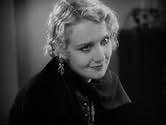Here we witness the reunion of Joan Crawford, Dorothy Sebastian and Anita Page two years after their 1928 hit, Our Dancing Daughters. This time, perhaps reflecting the input of left- wing screenwriter John Howard Lawson, the girls are proletarian department store workers instead of the privileged creatures they played in the previous film. The early scenes pan through the dressing room where the employees dress for the day's work, catching snatches of shopgirl conversation. But the three central characters are still struggling with that old demon, sexual morality in the modern era. In this round, Crawford is the cynical one who has been abused so often by men that she has developed a distinct armor against their advances; Sebastian and Page are utter dupes who, in their yearning to marry money and escape a life of drudgery, fall for the first superficial moneyed suitor that comes along. Robert Montgomery, Raymond Hackett and John Miljan are the flawed menfolk they encounter.
Though the plot developments are contrived even by the standards of the day, this is not a bad entertainment but it suffers midway when the progression of events grinds to a halt in favor of an elaborate but not very imaginative fashion show, ostensibly to impress female moviegoers, or perhaps to show off Crawford's beautiful body and skill at posing. She gets the star treatment here, frequently in dazzling close-up. Sometimes her facial expressions veer a bit into semi-dementia, but she restrains herself admirably. Anita Page does very well as the innocent victim of the thoughtless Hackett. Sebastian's role is in the wan mode of ZaSu Pitts; she has an amusing drunk scene. Montgomery, born to wear white tie and tails, must have gotten a big career boost with this one.
If nothing else, this film can probably boast the most impressive tree house ever created for the screen.





































